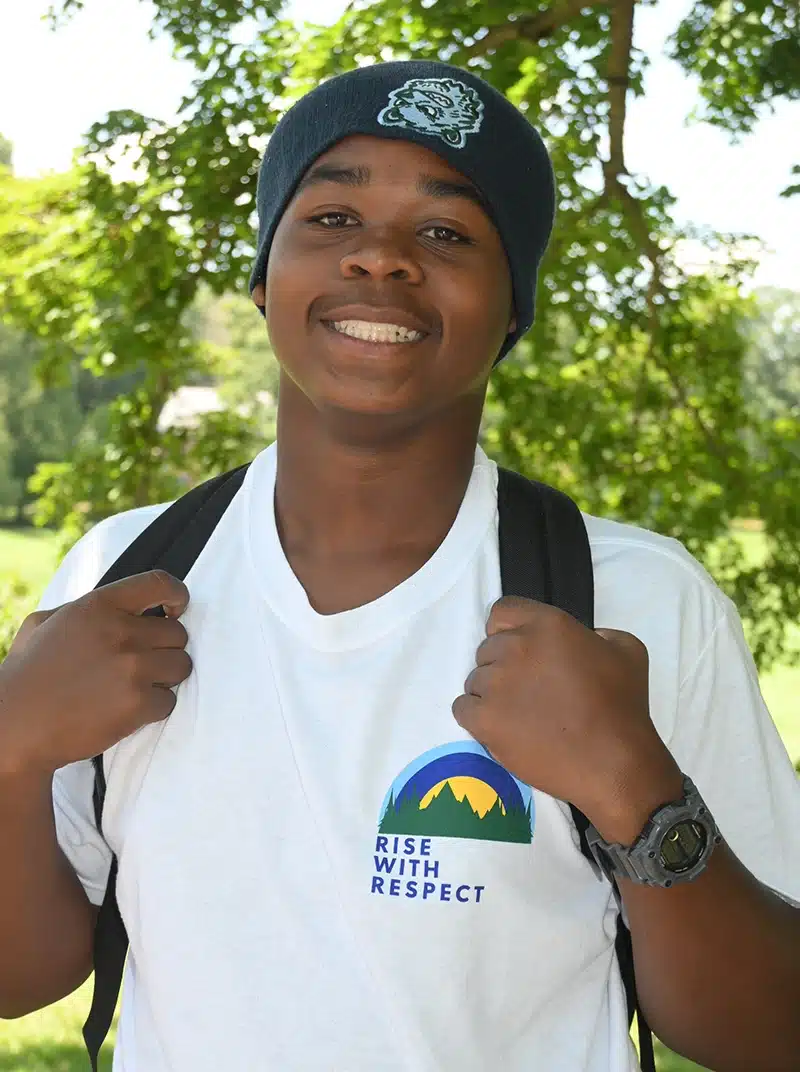How Small Classrooms Turn Academic Struggles into Success Stories
When Every Student Matters That’s Where Real Transformations Happen

Israel J. Pattison returned to Boys Home of Virginia years after graduation and wrote these words: “I sensed that these were people deeply devoted to helping students learn and grow, despite the challenges they may have faced in the past.”
That devotion starts in our classrooms, small spaces where struggling students develop into confident learners.
The Boys Home of VA has been proving something important since 1906: when you shrink the classroom, you expand the possibilities. Our small class sizes aren’t just a stat: they’re the foundation of how we help academically struggling young men to discover they’re capable of far more than they ever imagined.
The Reality of Small Classrooms at Boys Home
If you walk into any of our classrooms, you’ll immediately notice the difference. Instead of 30 students crammed into rows, you’ll see maybe 8 young men working closely with a teacher who not only knows their names, but their learning styles, their struggles, and their dreams.
Our small class sizes allow teachers to focus more deeply on each student’s needs, offering differentiated instruction in a structured, relaxed environment.
This is part of our commitment at Boys Home.
The Numbers That Tell the Story
Because our numbers stay small, students using our Accelerated Reading program may gain up to 3 grade levels in one academic year.
Three grade levels. In one year. These aren’t just statistics. These numbers represent young men who arrived feeling “stupid” or “behind” and then discovered they were neither. They just needed the right place to learn and grow.
No one is invisible here
In traditional large classrooms, struggling students become masters of invisibility. They sit in the back, avoid eye contact, and hope nobody notices they’re lost. It works—until test scores reveal the damage.
Small classrooms eliminate the hiding spots. With only 8 students, everyone participates. Every question gets heard. Every struggle gets noticed before it becomes a failure.
We’ve watched the transformation happen countless times: quiet young men who spent years being overlooked suddenly find their voices, ask questions, and engage with learning in ways they never thought possible.
Teachers Who Actually Know Their Students
In large classrooms, teachers often know students primarily through their grades and behavior reports. In small classrooms, something deeper develops.
Our teachers know that one young man will learn better when he can move around the room. They remember that another student struggled with fractions last week but mastered the end of the semester. They notice when someone’s confidence starts to slip and they can address it immediately.
These relationships matter. Students work harder for teachers who believe in them, and teachers can care more deeply for students they actually know.
Learning that fits each student

Students are encouraged to learn new skills and how to become a better student and, ultimately, a better person.
Some students learn visually, verbally, or experientially. Some need more time to think and process information, while others need to be challenged.
Building academic confidence that lasts
Alumni Israel J. Pattison reflected on his time at Boys Home with these words: “There are gifts you can never repay.”
One of those gifts is academic confidence—the deep knowledge that you can learn, grow, and succeed even when things get difficult.
Smaller classrooms build confidence naturally. When students can’t hide, they’re forced to show up. When they show up, they discover the capabilities they didn’t even know they had. When they succeed, they begin to really see themselves differently.
Beyond the classroom walls
The impact of small classrooms extends far beyond academic subjects. Students learn to articulate their thoughts clearly, even asking meaningful questions, and participating in discussions. These skills will serve them well in college and into their careers.
As Pattison wrote about his return visit: “Seeing new facilities and new programs on campus made me feel that Boys Home was adapting and evolving with the changing times.”
We are committed to keeping our classrooms small even as we grow, because we know that smaller learning environments create the foundation for lifelong success.
A different path for struggling students
If your son has struggled in traditional schools, the problem might not be his abilities: it might be the environment.
Many bright young men simply need more: individual attention, personalized teaching, and real relationships with teachers who understand their unique needs.
At Boys Home of Virginia, small classrooms create space for the kind of learning that improves not just grades, but how young men see themselves and their future.
As one alumnus put it: “Like the water flowing down these humble streams and mighty rivers destined for the sea, time has carried me far away from the headwaters of my youth.”
But those headwaters, including these small classrooms where struggling students become confident learners, continue to nourish everything that comes after.
Ready to see how our small classroom approach could change your son’s story? Contact us today to learn more about our academic program and discover the difference personal attention makes.
